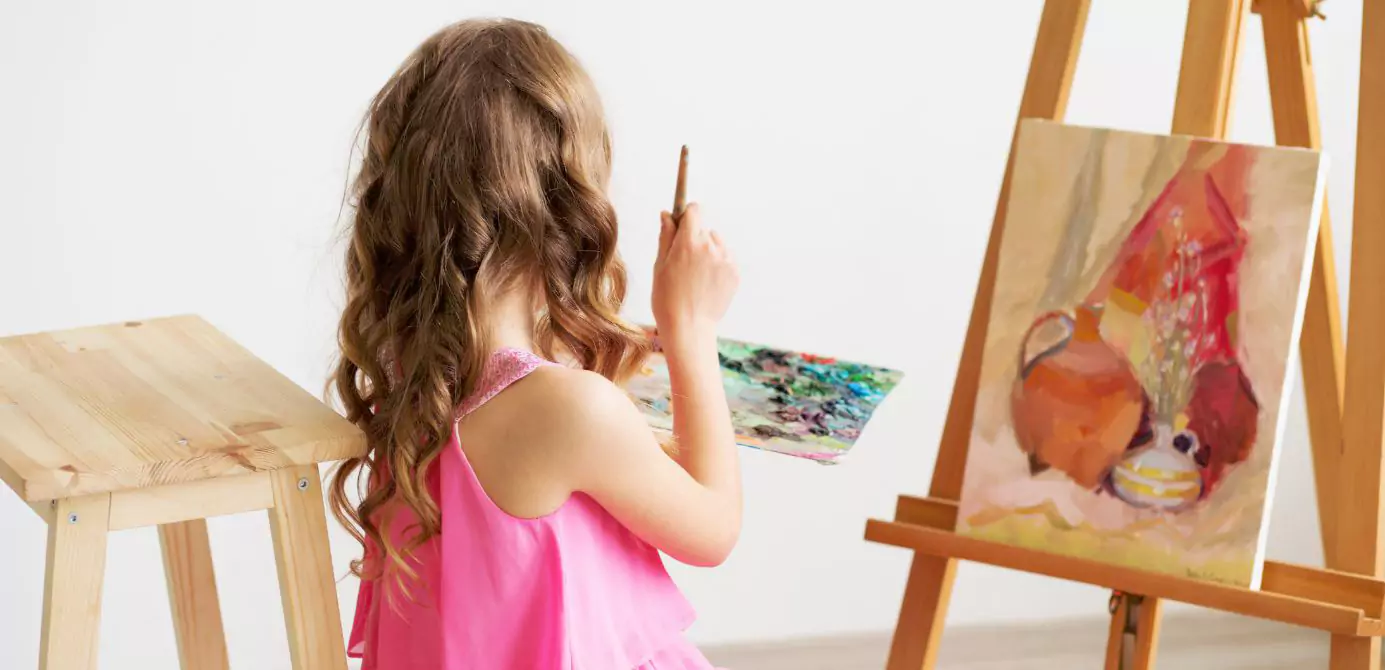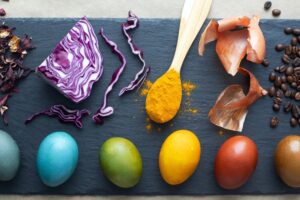Simple Acrylic Painting Tips For Beginners
![]()
- Posted by abrakadoodle.com.sg
- Categories Painting ideas for kids
- Date 24 August 2022

Acrylic paint was first developed in Latin America in the 1920s when artists demanded paint for their outdoor murals. The paint had to dry quickly and be resistant to changing weather conditions.
It was however left to “artists and scientists to work closely together to perfect the paint and in the mid-1950s, an American company launched the first commercially produced, water-based Acrylic Paint called Liquitex Soft Body.”
The great thing about acrylic paint is that, unlike watercolours, acrylic paint can be used on most surfaces — paper, glass, metal as well as wood — and comes in handy when it comes to craft projects.
Acrylic paint is a perfect choice for beginners as it has many of the strengths of oil paint in terms of colour translucency, opacity and body, but without using toxic solvents for mixing and cleaning. It is fun, affordable, and versatile.
Acrylic Paint is water-based and can be thinned with water but, once dry, it turns water-proof. As a result, it is perfect for use by children for painting and for craft projects. Just keep one thing in mind though, acrylic paints are permanent, so once dry they don’t wash off.
Here are some unique ways and techniques of acrylic painting to stimulate your child’s imagination. Feel free to experiment. There are no rules to follow because the process is always more important than the end product.
Also, keep exposing your child to a variety of art materials, and use different tools and paints to ensure different sensory enriching experiences. Even if your child’s paintings look like a mess to you – remember it’s her creation. Celebrate it!
Table of Contents
ToggleDry brush effect
Creating a wash
The wash technique is an easy way to create a watercolour effect for your painting’s background. Just like when you use watercolours, a wash of acrylic paint will make colours blend together and more translucent.
The purpose may be to help create the effect of a misty sky, a vibrant sunset or to give your painting a more abstract feel, or to quickly cover the canvas with a base layer of colour.
If you like working with watercolours, you’ll most probably come to love working with acrylic washes. The big difference to remember is the acrylic paint will set quickly and permanently.
Get started by taking a generous scoop of acrylic paint onto your palette. Dip your brush in water and dribble the brush into the paint. Stir. Apply this scoop of paint onto the canvas, covering the whole surface if you are doing a background. You will end up with a light, nearly-transparent layer of colour.
You can create intriguing special effects by adding a little more water or adding more colour. Experiment. Apply multiple layers on the top of the canvas and fewer as you move down for an ombre effect, or combine different brush strokes to create textures. Use your imagination!
Stippling with a toothbrush
For intricate painting styles, stippling is a popular technique. It is essentially forming an abstract image without using long, smooth brush strokes, but by a collection of small dots and circles. You can use a paintbrush with stiff bristles or a discarded toothbrush to try this out. This painting technique is energetic, unpredictable and a whole lot of fun.
When using a stiff paintbrush, apply paint on the paper surface or canvas with a repetitive dabbing motion to create the effect. Or use a toothbrush dipped in paint and send a stream of droplets by gently sliding your thumb across the bristles of the brush over the painting surface. The stream of tiny droplets creates shapes that prompt several interpretations and is more abstract. Stippling is similar to but not exactly pointillism, where the shapes formed are more precisely defined.
Pouring a perfect abstract
Some techniques are more common and easier, while others need more practice and time. Techniques for beginners are easy, quick to learn and need a few additional supplies. Simple to execute and allows you to create stunning works of abstract art.
A pouring medium is what makes the magic happen, without it you cannot get the paint to flow. Basically, the pouring medium is an additive that you add to your acrylic paint to increase its fluidity. It also keeps the colours vibrant and helps you create intricate patterns. You can get the pouring acrylic paint ready-made or DIY.
To get started, premix the acrylic colour in individual cups with the pouring medium. Pour each colour separately onto the canvas making lines or circles, taking any direction and going to places you’d like to go. Then tilt the canvas and enjoy the pattern that emerges. And it is done!
Of all the pouring techniques you can choose, the Dutch Pour technique is a little difficult but is an absolute winner. The results are usually spectacular and easy, and the best part, even a beginner can experience the magic of pouring. Each new creation is bound to be one-of-a-kind and amazingly different.
Splattering is freedom to express
Splattering is a great way to experiment with less precise acrylic painting techniques. It is fun because there are no lines to restrict your creativity! This technique is about freedom, a play with colours, and want to express the chaotic nature of life.
The technique is achieved by wetting your brush in water, before dipping it into an acrylic paint of your choice before flicking the soaked brush to splash colour onto the canvas. Creating a real abstract piece of spontaneous art, as well as roughing up an already created precise artwork.
All you need is a canvas, a range of acrylic paints, and an open mind for a disorder to create bespoke masterpieces!
Layering for contrast & tonal values
Among the most effective acrylic painting techniques is the one called layering which has resulted in some of the most well-known and desirable works of art in the world. Layering colours on top of one another creates an illusion of depth. Building contrast and tonal values.
This makes you look through one or more colours to see the layers below. This technique tricks the eye into seeing different depths between each layer, creating an impression that one shape is in front of, or behind another.
The technique has a huge impact on the overall feel of a painting. Brightening areas that would otherwise be flat and uninteresting.
Acrylic painting ideas
Paint tulips in a jiffy!
Your favourite flower may be tulips and the favourite craft activity for toddlers and preschool children is playing with colours. So put the two together, and have a blast.
Remember, painting with anything other than a paintbrush is always fun for young children. Using an ordinary fork, instead of a paintbrush, to paint will be a great start. It’s quick, easy, and pretty mess-free.
Squeeze various colours of acrylic paint onto a paper plate. Start with less and add more if needed. Dip the backside of a fork in the paint, and press down on the paper to make an impression of the tulip. Wipe the fork clean with a paper towel and repeat using different colours.
Use a paintbrush to add in stems and leaves. Then use the fork again to make grass and sun. And lo, your tulip masterpiece is ready in no time!
Strawberry rocks!
Normally we tend to use larger-sized rocks when it comes to doing rock painting. But why not try using smaller stones and create a set of extraordinarily tempting and real-looking, rock-painted strawberries?! Needless to say, this will be an exciting and easy-to-do project over the weekend. You can add a little bit of drama to the whole exercise so that your toddler will enthusiastically participate and stay engaged.
Hand your child a small hamper to carry and take her for a stroll in the park. Help her collect a bunch of smooth, triangular-shaped rocks — the sizes can vary from ½ an inch to 1½ of an inch. Explain to your child what you are going to do with them. Inspire her and stimulate her senses while you are at it.
Collect as many pebbles and small rocks as you can and bring them home. Soak them in a tray containing a little detergent and water and give them a quick scrub. Wipe clean and allow to dry.
Using a flat brush, paint the entire surface of the small stones bright red. Ask your child to do the same with the other stones. It is essential to involve your child by showing her how it is done.
Using the tip of a toothpick, dip it in black acrylic paint and apply small dashes all over the painted red stones. Repeat with yellow paint, covering a portion of the black dashes with yellow ones.
And lastly, add two different shades of green to the tops of each of the painted rocks. Your painted strawberry rocks would by now be dry and are ready for display.
Pineapple finger painting
Almost every child loves to paint. Pineapple finger painting projects are super simple and always have a big surprise in store for you at the end. Each painting will look different!
As a matter of fact, even when children are well into their teens, they don’t lose that urge because it is still fun to paint with fingers. This explains why pineapple finger painting can be so much fun for both toddlers and adults alike!
Use a paper plate as a palette to hold the acrylic paints. It really doesn’t matter which colours you choose, but be sure to squeeze out a generous blob of each colour. The colours can be contrasting, complementary or totally unique to each other.
After laying out the colour blobs, pick up the paper palette and tilt the plate back and forth, but make sure the acrylic paints don’t mix into each other. They just need to touch each other around the edges. You are now ready to start your finger painting!
Show your child how to dip her thumb in the colour blob and press it firmly on the paper surface. Create a pattern in the shape of a pineapple by making three thumbprints in the first row, follow this up with four thumbprints in the following two rows, and end it with a row of three thumbprints again.
Remember to vary the colours of each thumbprint. Bear in mind, that the more the variety of colours you manage to get in a single thumbprint, the more surprising will be the outcome. So don’t hesitate, because this is what makes Pineapple Finger Painting so exciting and fun!
The final step involves getting the lush green leaves on top of the pineapple right. Use a thumb dipped in green paint again and press it just above the first row of thumbprints, and slide it across at an angle to form short strokes of a green cluster of leaves. That’s it!
Cherry blossoms in bloom!
Children find painting without using a paintbrush fun as this can produce amazing effects. Painting a cherry blossom tree for instance is a beginner-friendly idea. It is also a perfect first canvas project for young children as it increases their confidence levels in painting with acrylic paints.
Start by drawing a bare shape of a cherry blossom tree with a brush dipped in black or brown acrylic paint. While you are at it, you can help your child learn to mix paints. Teach your child how she can create various shades and tints of red/pink that will help create an extra dimension to the cherry blossoms. It is easy to mix colours, start with simple colour mixes like adding red to white and you get pink! It is as simple as that.
Next, bundle together 3-4 Q-tips using an elastic band. Dip the tips in pink acrylic paint and dab away to make your blossoms. Just relax and enjoy the dabbing. Try this Q-tip technique as it can help create many cherry blossoms quickly and makes painting them very easy for everyone.
A never-ending journey of joy
These acrylic painting ideas for beginners will set your child on a journey filled with plenty of beautiful experiences and moments that she truly enjoys. Encourage and stimulate her, but be gentle with your child and allow her to experiment and add her own twist and character to this journey.
When you approach painting like a series of mini-experiments, each building on one another — you’ll together help create something unique and interesting. What is important is not the outcome but the journey of learning together. This way she’ll enjoy the whole process that much more.
Always remember: painting (and learning a new skill) is a process. With each new thing your child learns and each new painting she makes, your child is on her way to becoming a better thinker, problem solver and budding artist!
About Abrakadoodle
This is the kind of Process Art learning experience that inspires children to think different, be innovative, and devise ways that teach interesting things found in the real world. Changing the way they discover and imagine. Igniting their minds to think, play and learn like never before.
If you like to enrol your child in our children’s art classes or participate in cognitive learning activities, give Abrakadoodle a call. Or better still, make an appointment with the head of a centre near you.
Get hands-on exposure to an experience that will make you see art in a way that adds value to a child’s life.
Please note: Abrakadoodle classrooms are thoroughly sanitized every day — the tables, the chairs, the children’s activity stations and everything else the child might touch is made safe and clean. They also wear a mask, wash their hands frequently, and practice social distancing.
Frequently Asked Questions
- Watercolour painting
- Finger painting
- Canvas painting
- Oil painting
Acrylic painting techniques are among the most popular types of painting for beginners."
A few practises to avoid while exploring various acrylic painting tips:
1. Pouring too much paint on the palette will cause it to dry quickly and harden.
2. Do not rush the colour blending as this will cause bubbles in the paint.
3. To clean acrylic paint brushes, do not use turpentine or mineral spirits.
4. Acrylic paints need not be mixed with water.
5. Working slowly is not recommended when creating an acrylic painting art piece because it dries quickly.
Easy acrylic painting ideas that are beneficial for children include:
1. Creating a tulip landscape with various types of acrylic paint teaches children the art of colour blending.
2. Making strawberry themed art on small stones with acrylic paint introduces children to different art materials and inspires their imagination.
3. Creating pineapple finger painting artwork stimulates creativity as well as improves the fine motor skills of children.
You may also like

Made To Measure, Homemade Paint Recipes

How To Inspire Your Child To Begin Painting On Canvas

